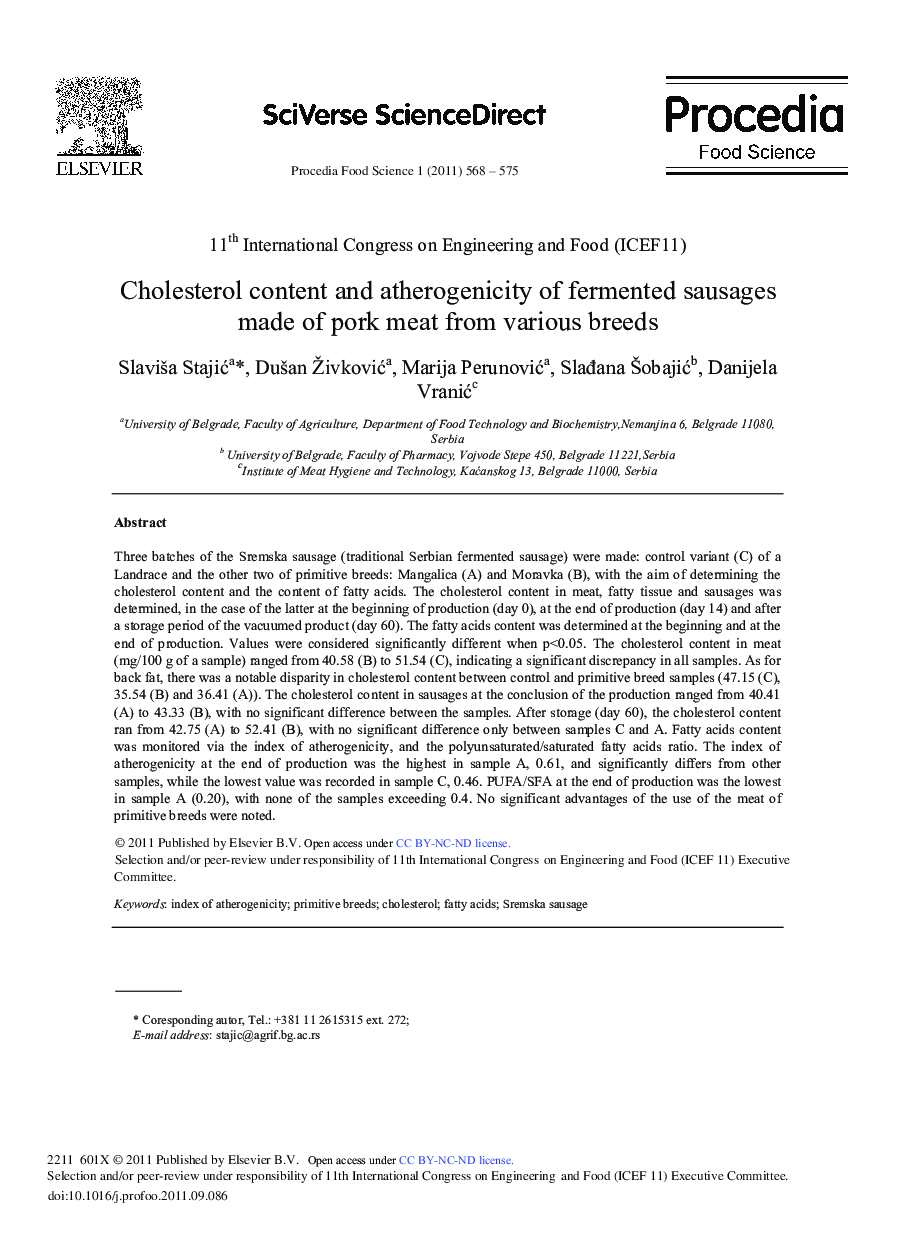| Article ID | Journal | Published Year | Pages | File Type |
|---|---|---|---|---|
| 1264994 | Procedia Food Science | 2011 | 8 Pages |
Three batches of the Sremska sausage (traditional Serbian fermented sausage) were made: control variant (C) of a Landrace and the other two of primitive breeds: Mangalica (A) and Moravka (B), with the aim of determining the cholesterol content and the content of fatty acids. The cholesterol content in meat, fatty tissue and sausages was determined, in the case of the latter at the beginning of production (day 0), at the end of production (day 14) and after a storage period of the vacuumed product (day 60). The fatty acids content was determined at the beginning and at the end of production. Values were considered significantly different when p<0.05. The cholesterol content in meat (mg/100 g of a sample) ranged from 40.58 (B) to 51.54 (C), indicating a significant discrepancy in all samples. As for back fat, there was a notable disparity in cholesterol content between control and primitive breed samples (47.15 (C), 35.54 (B) and 36.41 (A)). The cholesterol content in sausages at the conclusion of the production ranged from 40.41 (A) to 43.33 (B), with no significant difference between the samples. After storage (day 60), the cholesterol content ran from 42.75 (A) to 52.41 (B), with no significant difference only between samples C and A. Fatty acids content was monitored via the index of atherogenicity, and the polyunsaturated/saturated fatty acids ratio. The index of atherogenicity at the end of production was the highest in sample A, 0.61, and significantly differs from other samples, while the lowest value was recorded in sample C, 0.46. PUFA/SFA at the end of production was the lowest in sample A (0.20), with none of the samples exceeding 0.4. No significant advantages of the use of the meat of primitive breeds were noted.
